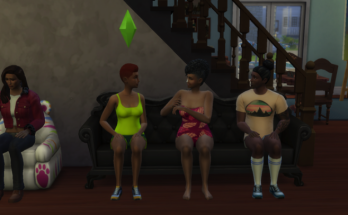For this week’s ethnographic project for MALS 72200: Contemporary Feminist Thought, the methodology used was of direct participation on my Medium site (by posting open public stories) as well as interviewing – or at least trying – both content creators of the website, and two of the authors published in Unruly Bodies. At the same time, and as a way to try to engage more with my potential readers, I posed on purpose direct questions on my writings, in hopes that someone could answer to them, and from there create a form of informal virtual conversation.
The goal was to position myself in the community, while trying to answer to the question of how race – and particularly, the binary of Hispanic/Latinx – is seen in this space. My hypothesis – which so far I am still trying to prove, for only I’ve had one engaged reader – is that in that this particular magazine, there is no distinction between one or the other, and therefore there might be some errors when it comes to analyze and conceptualize feminism and gender studies from this point of view.
In terms of the method used, my first step was to contact the Medium support staff and ask them about the basic rules of content, and ways of contacting the authors of Unruly Bodies. The first answer I got was a computer generated one, letting me know that my questions had been received, and that soon enough I was going to be contacted by a member to answer to them; in less than two hours, however, they got back at me, indicating how to do so by attaching a link with the instructions.
Following that, I contacted two authors of Unruly Bodies – Keah Brown and Carmen María Machado – by sending them a direct message from their published stories. It is quite simple: in certain paragraphs of their posts, there is a chance to leave notes (either public or private), which is the option the magazine gives to subscribers to provide feedback to these stories. I have yet to hear back from them (if I ever do so), but in these comments – which were made by leaving private notes – I asked them about why and how they got involved and this project and what were their notions regarding feminist (of color) online spaces. Sadly, there is no possibility to show records of this, because there is not an “inbox” that keeps record of these interactions (and now I have realized that I made and error, and I should have taken screenshots of these messages).
The third part of this stage has been so far the most interesting and comfortable one, as I have been able to interact with another user directly. By leaving my stories open for anyone to leave comments, I had the chance to hear back from TS (I will keep her name anonymous for the sake of her own privacy); in it, she raised the question about how I can make the discussion happen regarding the binary Hispanic/Latinxs in my community. At this point, she has been the only one “clapping” my stories.
As a brief apart, I would like to address the ways on which the website provides automatic feedback, and how to read and analyze the stats of each post. After writing a story, and once it is ready to be published, the user has the option to send their approval so Medium can curate it, and then share it through the paywall metered via the daily email Digest, or inside the website itself. On the other hand, and in order to provide a more immediate feedback, users can see through the Stats window the views, fans, reads and read ratio each post has. Even though I can see who follows me, and claps my stories, I have no control over who shares them, and who actually reads them.
Medium.com as an online magazine has provided so far clear delimitations on what to do and whatnot, the basic rules of engagement, and all the elements that make possible that this website can be, for me, considered a safe online feminist space. My main concern, however, is to engage with the editor and content creators of Unruly Bodies, as I have not heard back from them yet, and I am afraid the chances are quite little to achieve this – based also in the little present activity they have on the portal. Is it possible to be in an inactive yet safe feminist online space?

